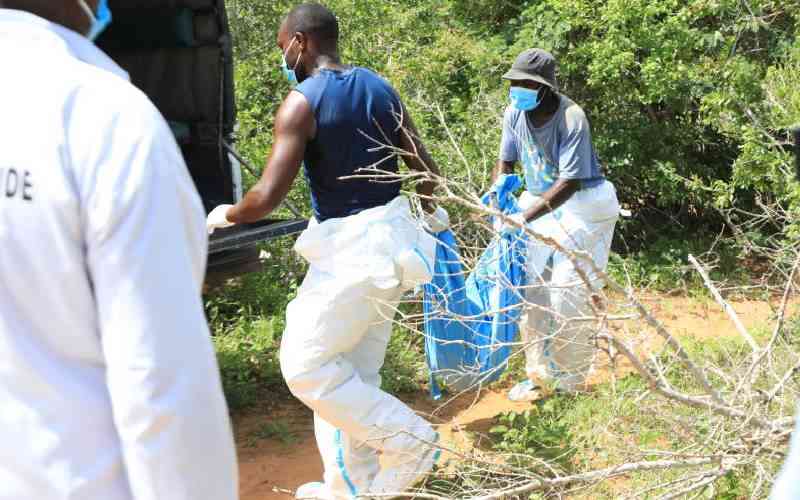 |
|
Teachers of Shamta Academy walk to school. They wear bright coloured uniform while on duty. [Photo: Benjamin Sakwa/Standard] |
Kakamega, Kenya: Teachers in a school in Kakamega County wear uniform while some of the pupils walk barefoot. The locals watch the teachers in open amazement.
Shamta Academy, which is located in Maraba Estate, a few kilometres from the town centre, is enclosed and the entrance is restricted to a few members of a church, making it difficult for anyone else, including journalists to access it.
When we visited the school last Friday, the principal, Willis Deblat Desers, said the school has a population of 100 students in secondary school and 300 in primary, with ten teachers.
“This is good for us because we are a private school. Besides, the Ministry of Education requires a 1:10 teacher to learner ratio, which we have met,” said Desers.
The school has registered 20 candidates for this year’s Kenya Certificate of Secondary Education (KCSE) examinations. The 2013 KCSE results show the school registered a mean score of 6.032 in 2013, an improvement of 0.578 from the 5.4545 mean achieved in 2012 when it registered 19 candidates and took position 46 in Kakamega County.
Shamta Academy is sponsored by the Pentecostal Fellowship Church whose headquarters is physically located in the school compound. We learnt that majority of worshippers are drawn from Mumias Sub-County, more than 35km away.
Desers says the school is fully sponsored by the church, which offers spiritual guidance and counselling to students and pupils as well as financial support.
“The church’s support has helped this school perform well in the county,” said Desers.
But the reality is different. The school lacks facilities such as classrooms and a staff room. Teachers share chairs as they are not enough.
All the teachers are members of the church. And the students attend a church service every Thursday and go through compulsory Pastoral Programme Instruction.
Interestingly, the students attend the service without shoes.
“We remove our shoes as a way of showing that God is holy and we must go before him bare. We leave our shoes at the door,” said a member of the church who did not wish his name disclosed.
Even outside the church, most of the children walk around barefoot, with only a few in slippers, contrary to what happens in public and private institutions where it is compulsory to wear shoes and proper uniform.
The beliefs and practices of the church have resulted in some Kakamega residents concluding that the school is cultic and this has had an impact on student admissions as parents have shied away from enrolling their children.
“I can’t take my child there because we suspect they could be a cult and the activities of the sponsoring church raise more questions than answers. For instance, most of the followers are drawn from Mumias rather than from the locality,” said a local.
Stay informed. Subscribe to our newsletter
Teachers are required to wear clothes that fit the requirements of the church – it is the same dress code – and if anyone does not comply then he or she is not allowed to teach in the school.
According to one teacher at the school, Pendry Petheka, the dress code is only allowed while they are in the school compound. Once they leave, they must change to their ‘normal’ clothes.
 The Standard Group Plc is a
multi-media organization with investments in media platforms spanning newspaper
print operations, television, radio broadcasting, digital and online services. The
Standard Group is recognized as a leading multi-media house in Kenya with a key
influence in matters of national and international interest.
The Standard Group Plc is a
multi-media organization with investments in media platforms spanning newspaper
print operations, television, radio broadcasting, digital and online services. The
Standard Group is recognized as a leading multi-media house in Kenya with a key
influence in matters of national and international interest.
 The Standard Group Plc is a
multi-media organization with investments in media platforms spanning newspaper
print operations, television, radio broadcasting, digital and online services. The
Standard Group is recognized as a leading multi-media house in Kenya with a key
influence in matters of national and international interest.
The Standard Group Plc is a
multi-media organization with investments in media platforms spanning newspaper
print operations, television, radio broadcasting, digital and online services. The
Standard Group is recognized as a leading multi-media house in Kenya with a key
influence in matters of national and international interest.









